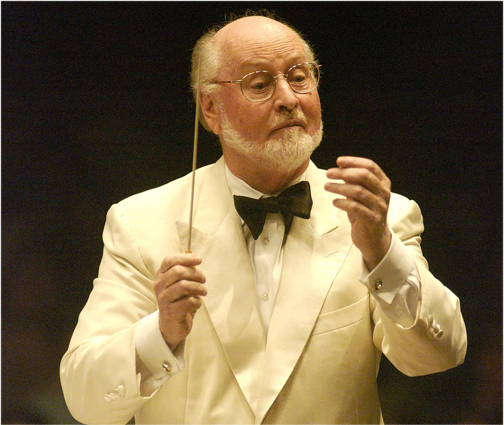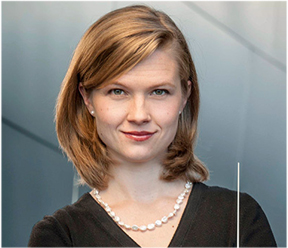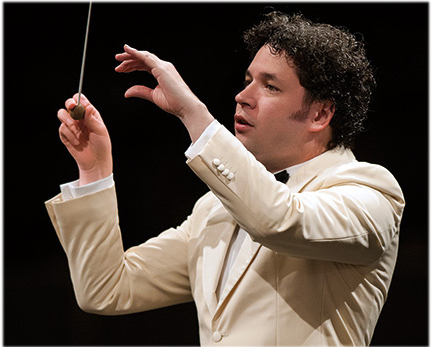By Robert D. Thomas
Music Critic
Southern California News Group
 In the 55 years that I have attended Los Angeles Philharmonic concerts I cannot count the number of composers who have conducted the orchestra. However, only a few have carved major careers in both disciplines. Two of those were LAPO Music Directors: André Previn and Esa-Pekka Salonen. Two others in that multiple-category were Leonard Bernstein and Pierre Boulez.
In the 55 years that I have attended Los Angeles Philharmonic concerts I cannot count the number of composers who have conducted the orchestra. However, only a few have carved major careers in both disciplines. Two of those were LAPO Music Directors: André Previn and Esa-Pekka Salonen. Two others in that multiple-category were Leonard Bernstein and Pierre Boulez.
Over the weekend more than 50,000 people jammed Hollywood Bowl for three concerts conducted (in part) by another of those multiple-category icons: John Williams pictured above). He’s never held an official position, either conducting or composing, with the Phil but he long ago might as well have been named Principal Conductor of Movie Music Programs at the venerable Cahuenga Pass amphitheatre since, as he told the capacity crowd last night, this is his 38th year of conducting at the Bowl. David Newman — who is himself both a composer and conductor — told the audience early on that he believes Williams introduced the concept of leading an orchestra accompanying movie clips, and so he did last night.
At age 84, Williams was more than willing to share the podium with Newman, who — Williams told us — he met when Newman was a toddler and Williams was playing in the 20th Century Fox orchestra for the 1957 movie version of South Pacific (Newman’s father, Alfred, was the studio’s music director and a formidable composer in his own right).
Newman and the orchestra opened last night with a suite from Alan Silvestri’s score to Forest Gump, which accompanied a montage of clips saluting Paramount Pictures’ 114-year history.
Some of the remaining numbers — a suite from Franz Waxman’s score for Sunset Boulevard and Nino Rota’s score to The Godfather and Godfather II — were accompanied by montage clips from their respective films. Others — Williams’ theme from Sabrina and “The Wild Ride” from Bernard Hermann’s score for North by Northwest — were performed simply as music.
Newman’s commentary was intelligent but sounded somewhat frantic in delivery, especially considering that this was the third show of the weekend. It made me appreciate anew how good conductors such as Rachael Worby, John Mauceri and Bramwell Tovey are at this skill.
The formal first half (Newman and the orchestra encored with the Mission Impossible theme music) ended with the opening sequence from Star Trek: Into Darkness, with Newman leading the orchestra as it accompanied the action on screen.
During the intermission, I heard one teenager sum things up when he said, “The Star Trek was dorky but I thought North by Northwest was cool.” The kid’s got the makings of a critic!
Williams led his own music the second half of the concert. I was struck by how much more at ease and fluid he seems as a conductor from when I first remember seeing him on the podium. He still uses a score for everything but he was relaxed and seemed to thoroughly enjoy himself, even adopting a few of Gustavo Dudamel’s sly mannerisms to keep things moving forward smartly.
About a quarter of the exuberant 17,000+ attendees came armed with light sabers, a phenomenon that Williams remarked is unique to the Bowl (my box mate brought a bottle of “Lord Vader” beer, instead).
After Williams and the orchestra teased the audience by playing “Flight to Neverland” from Williams’ score for Hook and a suite from The BFG, it was time for music from the Star Wars movies, starting with the latest incarnation, The Force Awakens, and continuing with music from the original trio of George Lucas-created films.
Film montages accompanied some — but not all — of the music, all of which the orchestra played with its customary panache. As he introduced various segments, Williams told the story of how, in 1977 while seeing rough cuts of the original Star Wars movie, he assumed that Luke Skywalker and Princess Leia would eventually become lovers and so wrote the “Princess Leia” theme as sensuous love music, not realizing until later that they were, in fact, brother and sister. “Not exactly appropriate music,” he noted wryly.
The “Throne Room & Finale” from Star Wars: A New Hope had light sabers waving everywhere in time to the music, a truly amazing visual. Williams and the orchestra encored with the themes from Harry Potter and Superman and the “Flying Music” from E.T.: The Extra-Terrestrial (heading home, many of us longed for those flying machines to leave the parking lots).
Although I saw and heard Bernstein conduct many times, rarely did he lead his own music. Ditto for Previn. With Salonen I’ve gotten to experience him conduct several of his own pieces. For 38 years John Williams conducting his movie music has been a part of our lives in Southern California and it never gets old.
Hemidemisemiquavers:
• Former LAPO Associate Conductor Miguel Harth-Bedoya returns to the bowl to lead the Phil Tuesday night in a program of music by waltzes by Johann Strauss II, Richard Strauss’ Ein Heldenleben and violin bon-bons by Fritz Kreisler, with the orchestra’s Principal Concertmaster, Martin Chalifour, as soloist. INFO
• Thursday night, Seattle Symphony Music Director Ludovic Morlot returns to the Bowl to lead a dance-themed program, with three L.A. dance companies accompanying the music. Stravinsky’s The Rite of Spring will conclude the evening. INFO
_______________________
(c) Copyright 2016, Robert D. Thomas. All rights reserved. Portions may be quoted with attribution.




